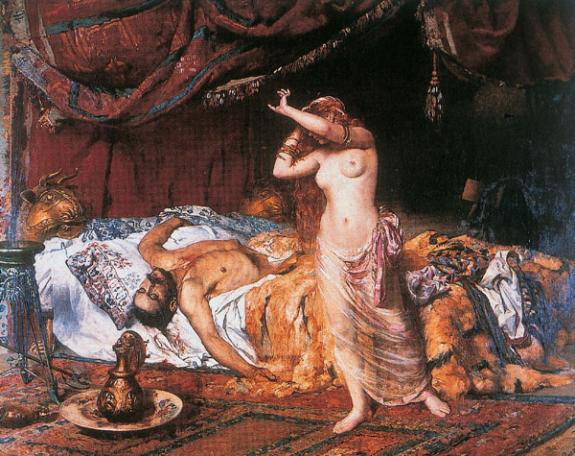I just finished The End of Empire: Attila the Hun and the Fall of Rome by Christopher Kelly. I have previously posted about various theories why the Western Roman Empire fell, and I have posted about the idea that the institutions of empire operate at the edge of chaos and may fall into that chaos quite rapidly.
Kelly focuses more on Attila and the Huns than on the fall of the Western Roman Empire. Unfortunately, there is little known about either as there is no Hun literature that has come down to us; Kelly goes to some length to argue that much of the literature that does inform was written much after the events it describes, and much of it was written by Roman, Christian enemies of the pagan Huns.
Attila led military expeditions over the years that threatened Constantinople, that helped the Romans defeat insurgents in France, and that entered Italy and threatened the seat of power in the Western Roman Empire. It is interesting that the Huns took and held the Hungarian Plain, having immigrated from territories east of the Black Sea, but that the campaigns into Roman areas seemed more for plunder than to conquer and hold land. One must assume that Attila led capable forces, that he had considerable strategic and tactical brilliance, and that he was effective in holding his forces and the territory on which they depended together. That his followers were less successful only adds to the credit that must be allowed Attila.
Kelly makes an effective case that Attila's court was quite sophisticated for the time, able to deal with foreign diplomats, living in comparative comfort and even luxury, with some sophistication in tastes.
As Kelly points out, legends have grown around the Huns. Hungarian leaders have sometimes given credit to the Huns rather than the Magyars for the founding of Hungary; the German Kaiser before World War I told his soldiers to fight like Huns. On the other hand, when the British talked about "the Huns" when referring to the Germans, the reference was anything but positive. We sometimes hear the phrase "to the right of Attila the Hun", a phrase which is anything but complementary. It is perhaps the very lack of information about Attila and the Huns, in spite of their significant historical role, that allows us to create legends that attribute all sorts to things to them. Indeed, Kelly shows that the Roman writers often wrote about the Huns using literary conventions that had the tinge of legend.
Fortunately, Kelly is able to draw on ancient summaries of Priscus of Panium's accounts from his own dealings with Attila and visits to Attila's court. The first hand observer appreciated the man Attila, and quite reasonably warned the Eastern Roman Empire that they were dealing with someone of substance. Kelly also suggests that Roman Emperors effectively used tools from military campaigns to bribes and assassinations to manage the frontiers of empire in a cost-efficient manner.
It is hard for me to understand the values of a tribal culture such as the Huns, and while I find some sympathy with Roman values, there is much about Roman culture that I find repugnant. On the other hand, I assume neither the Huns and the Romans would think much of modern American values.
The book is short, and readable although I found the many names of people hard to keep strait, especially as they are unfamiliar words from other languages from those I know. I found myself referring to the timeline in the back of the book to keep strait an order of events which I will soon forget. I was deeply grateful to the maps in the front of the book, and enjoyed the many illustrations (in black and white).
 |
| Image source |
 |
| Image Source |

3 comments:
Can you find out more about the artist who did the Attila the Hun death scene? (the black/white one)I might have found a lithograph work with the exact same image you used.
The color scene is "The Death of Attila" by Paczka Ferenc (1855).
The black and white one- not the color one. :) Seems I can't find any info about that anywhere.
Post a Comment